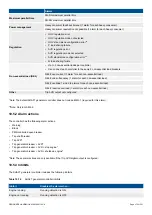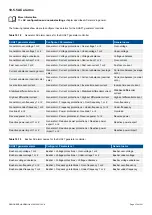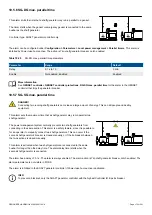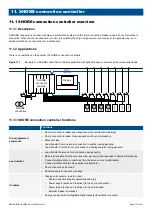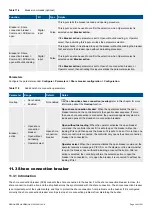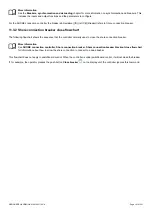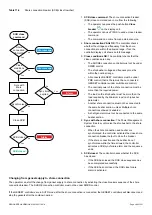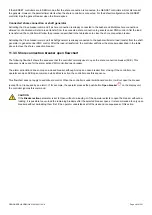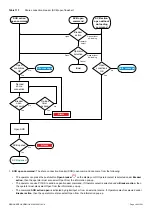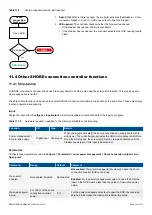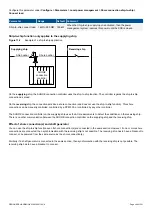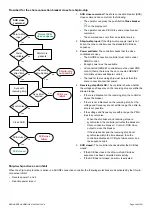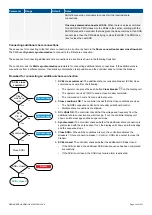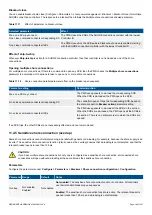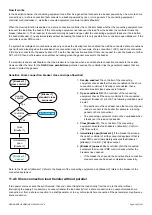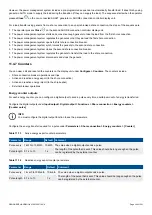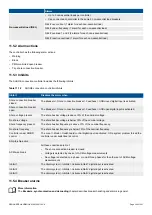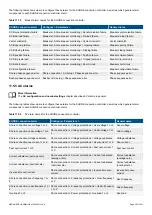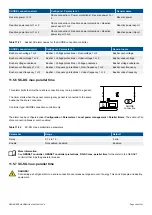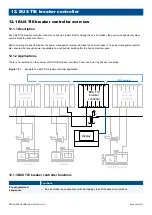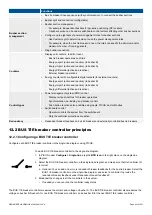
Table 11.8
Shore connection breaker (SCB) blackout close flowchart
SCB blackout
close
Blackout
present
No
Yes
No blackout
close
Auto close
enabled
No
Yes
No blackout
close
Close SCB
SCB closed
No
Yes
SCB closed
SC
V&Hz
OK
No
Yes
No blackout
close
Other
recovery
failed
No
Yes
No blackout
close
Alarm
1.
SCB blackout close:
The shore connection breaker (SCB) blackout close
command comes from the blackout close sequence.
2.
Blackout present:
The controller checks that the blackout close conditions are
present:
•
There must be a blackout.
•
The other blackout recovery options on the main busbar have failed (that is,
recovery by genset connection, auto close of the bus tie breaker, and auto
close of the shaft generator breaker). Note that the emergency genset is not
included in the blackout recovery options.
•
Auto close
must be
Enabled
(that is,
Configure > Parameters > Local power
management > Blackout > Blackout close > Enable SC blackout close
). If
Enable SC blackout close
is
Not enabled
, the breaker does not close
automatically.
•
The shore connection voltage and frequency must be within the allowed
range.
3.
Close SCB:
The controller activates the output to close the breaker.
4.
SCB closed:
The controller checks whether the SCB has closed.
•
If the SCB has closed, the SCB blackout close sequence has been completed
successfully.
•
If the SCB has not closed, an
SCB close failure
alarm is activated.
Manual blackout close
During a blackout, the operator can manually close the shore connection breaker by pushing the push button
Close breaker
on
the display unit if there are no gensets available that can solve the blackout.
11.3.5 Shore connection breaker trip flowchart
The controller automatically trips the shore connection breaker (SCB) for this alarm action:
•
Trip shore connection breaker
The controller does not require the shore connection breaker open conditions to be met for a breaker trip. Similarly, the breaker is
not de-loaded for a trip.
DESIGNER'S HANDBOOK 4189340911K UK
Page 386 of 521

